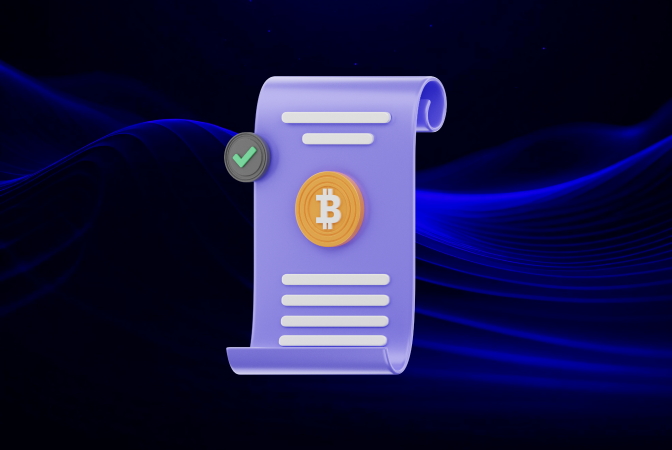SHARE THIS ARTICLE
A Comprehensive Guide to Crypto Trading Bots: Steps, Strategies and APIs

Bots are extremely powerful; it is said that a majority of traffic on the internet are just bots scanning through websites. Bots fulfil a very niche need, a need for performing tasks and making decisions that are repetitive.
One of the primary functionalities that bots offer, ergo, is pattern recognition, and by extension historical data analytics. The parameters for a trading algorithms, like any blockchain company would tell you, could be defined in four basic steps.
-
Data Analysis
-
Signal Generation
-
Risk Allocation
-
Execution
The first step there would be to scrape data and subsequent primary data analytics. The data can ideally be scraped through APIs of cryptocurrency exchanges through smart contracts or otherwise; most of the exchanges have very efficient APIs for the same. The potential available APIs that can be used are
-
Coinbase
-
Kraken
-
Bittrex
-
CEX.IO
-
Poloniex
The data has to be analysed and generate a Boolean PASS/FAIL file, which would be fed to a probabilistic machine learning model to train it. These data scraped from these APIs would have a combination of two kinds of weights:
-
Remote Historical Data – Given less weight within the algorithm
-
Recent Historical Data – Given more weight within the algorithm
The decision making parameters would be trained to account for historical data, but the bot would make decisions based on current market conditions. It is to be optimally fine-tuned to make alterations according to the same. The development process of the bot would go a bit like this:
-
Selecting Tech Stack
-
Selecting the right wallet or the right wallet development services
-
Selecting APIs
-
Account creation and KPIs
-
Selecting a combination of trading strategies
-
Architecture
-
Creation
-
Back-testing
-
Live Deployment
The first task, in order, would be selecting a tech stack – a combination of languages and functionalities that would be required to develop the bot. Within this task, however, the first sub-task has to be selecting a combination of trading strategies because it is on them that the functionalities depend. A good idea here, would be to probably involve a blockchain consultant or hire blockchain consulting services to help with the same, but it is likely they would use one of the following languages:
-
Python
-
Javascript
-
Perl
-
C/C++
Secondly, the APIs have to be selected and finalised from the aforementioned list. An API helps a program/algorithm to interact with a website. In the case of a bot, the primary use of these APIs would be data gathering and testing.
It is to be noted that different exchanges are likely to have slightly varying data because of different trading actions. The bot has to evaluate all of this with time-series analytics to develop an acute idea of the market function at a particular point in time, in different exchanges, to get a comprehensive view of the market as a whole.
This would also be a primary requirement for an arbitrage trading strategy, where the bot generates value based on differences in the price of the same commodity at the same time on different exchanges.
The next step would be the registration for the services of these APIs. It is important that this is done at this stage, as after the completion of first two stages, rigorous development and testing is to be started, and the same would be hindered if the blockchain developer team does not have all the tools.
The architecture of the bot is also dependent on the strategies selected, making strategies evidently one of the most important pieces of the structure; as they should be. A bot is only as good as the strategies it implements and the decisions it makes. The decisions can be programmed, but the strategies have to be selected. After this, the bot would be promptly back-tested on the trading terminal.
One notable mention in this process would be the scalability aspect of it. Trading bots function according to capital allocation, their strategies are dependent on that. There are bots which are not effective beyond $10,000. There are bots which would be effective with $100,000 but not with $10,000 because they might be depending on the volume to generate value.
The following is a comprehensive list of potential strategies:
1. Momentum Trading
This works like day-trading, where assets are bought and sold in short-term according to market ‘waves’. The bot would look for incremental volumes in trading activities, and buy-in where there’s momentum. Important recognition parameters here would be recognising entry and exit timings, and also loss appetite.
2. Mean Reversion
Here, the historical data would help in calculation of an average ‘mean’ price of a cryptocurrency asset and the deviations from it would be considered as ‘error’ terms. For example, if BTC was $1 and had a defined standard deviation of 10%, as soon as the price goes below $1 but higher than $0.90, the bot would keep buying with the assumption of selling at 1. If it went higher, it would sell/short sell.
3. Arbitrage
The bot would scrape the exchanges to look for a difference in prices. For instance, an asset is listed for %1.1 on exchange A and $1 on exchange B. The bot would buy from B and sell on A. Note that arbitrage opportunities are usually even smaller than this, and require capital on scale to function.
4. Naïve Bayes
The bot would utilize machine learning with this strategy. The idea is to use prior probabilities of events, looking at causal and co-related factors that would be pre-defined for this and formulate a posterior probability on the basis of which bot would make decisions. Note, that this strategy can be used as an add-on, to better refine decisions on some other strategy, say for example during momentum trading.
5. Natural Language Processing (NLP)
The bot would scrape websites with news about the relevant crypto-assets, and perform a sentiment analysis with the same. This analysis then would be tested with a trading strategy for accuracy, which would be done repetitively till the bot’s sentiment analysis output is accurate and actionable. Note that this is also a machine learning based strategy and can be used as an add-on.
6. Grid Trading
The bot would function on assigned grids, which would facilitate trading action with pre-existing buy and sell orders. This would also be with the help of assigned lower and upper limits. For example, consider a crypto asset, currently at $50. The upper limit is $75 and the lower limit is $25. Let the grid size be $5. In this case, you would have four open orders to buy and five open orders to sell.
If the price reaches $55, the paired order would be to buy at $50 and sell at $55, which would be executed simultaneously, booking a profit of the size of the grid.
7. Dollar-Cost Averaging
The bot would look for momentum, specifically downward momentum and try to average out costs. For example, the bot buys for a crypto asset in a downward trend which is currently priced at $50. The bot would buy 10 units at $50. Then 15 at $45. Then 20 at $40. At this point, the bot holds 45 units of the asset, at $43.33 per unit. In this case, when the trend reversal occurs, the bot wouldn’t have to wait to return till the original price, as everything beyond 43.33 is pure profit.
8. Coin Lending Bots
One of the ways to make money out of cryptocurrencies is to lend coins to margin traders. The problem with doing that manually is that you have to set parameters every time for each margin call. However, the advantage of using bots is that they take less time in finding interest rates and finding exploits in potential spike rates.
9. Market Maker Bots
These kinds of bots depend on the trading momentum, the more there is momentum and volume traded on the market, the higher the spread for the trade would be. Basically, these bots function by selling higher and buying lower than the current market price. The difference between asking price and the actual selling or buying price is called the ‘spread’.
Currently, in the market, there are a ton of ready and semi-ready bots available for purchase through blockchain development. It’s a pretty common blockchain development service. It is also important that the bot, if created from scratch, has to be comparable not just from performance point of view, but also functionality point of view. The following are few common features that usually bots provide:
-
Notifications: These are for market movements, bot actions, and various in-the-moment opportunities according to pre-set parameters.
-
Dynamic Strategy: It doesn’t make sense to have a bot with a single set strategy. The bot decision making process has to be an aggregation of multiple strategies, along with having flexibility to alter them.
-
Market Tracking and History Keeping: It’s important that the bot scrapes through the entire market data before setting the parameters for a trade.
-
Backtesting: This is basically testing the bot on historical data in the live markets, accounting for fees and latency required.
-
Scheduler: This is for deciding the time that the bot would be active.
-
Security: Along with all of the aforementioned features, the bot also has to be secure, but also not compromising in accessibility.
The following are few of the already available bots along with their distinguishing features:
-
Traility: This is a comprehensive bot that provides autocomplete for trades and backtesting.
-
Cryptohopper: A powerful bot, this works with 100s of tokens in about 13 exchanges.
-
Tokensets: They provide comprehensive portfolio management with no set fees, meaning they’re highly dynamic in their offering.
-
Cryptohero: This is highly recommended for beginners, as its UI is interactive and highly self-explanatory.
-
Superalgos: Along with aforementioned features, they also provide the option for visual strategy design.
If used effectively, a crypto trading bot can be highly lucrative. It can also be highly ineffective. Think of the trading bot as a highly personalised portfolio manager, actively trading according to your needs. If there’s any gap between the timeline of your financial plans and bot’s understanding of them, the returns wouldn’t align with any of it; if they’re there.
The main problem here, is how do you explain to a calculator; talking in the language of 1s and 0s, the need, the necessity of trading actions in a way that is just right, which is why it is highly advisable not to endeavour on this alone; and have a team, an able, experienced team, like us at Codezeros, to be the middleman in the conversations between you as a user and the bot.
Post Author

Vivek is a passionate writer and technology enthusiast with expertise in blockchain development. As the lead writer for Codezeros, he aims to educate and inform readers about the potential of blockchain technology and simplify complex concepts to present them in an engaging manner for both technical and non-technical readers.



